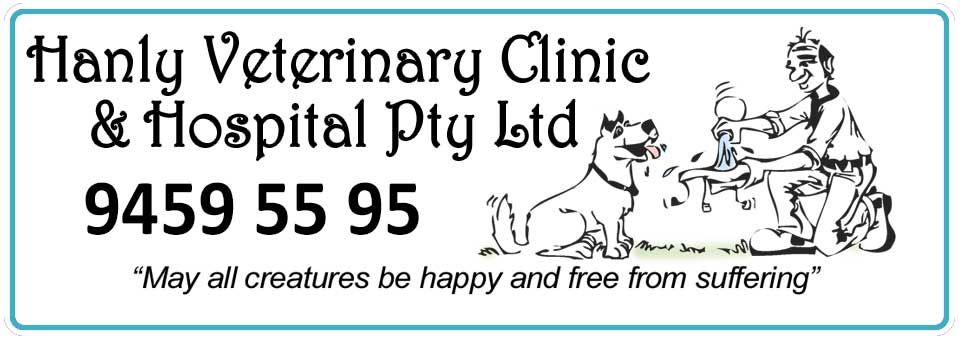Hanly Vets talk about old age in Dogs
Will you still love me when I’m old…
Old age is not a disease
As a result of advances in veterinary medicine, more knowledgeable care and improved nutrition, dogs are now living much longer, healthier lives. But, just as for humans, the passage of time has its effects, and you may begin to notice that your once-frisky pet seems to have slowed down a bit. Being aware of the natural changes that can occur as your pet reaches his or her golden years, as well as what you can do to help keep your pet as healthy, active and comfortable as possible, can ensure that you both enjoy this stage in your Dog’s life to the fullest.
How-and when-will I know that my dog is getting “old”?
As dogs move into the geriatric phase of their lives, they experience gradual changes that are remarkably like those of aging humans: hair around the face and eyes turns grey, their bodies are not as limber and reflexes not as sharp as they once were, hearing, eyesight and the sense of smell may deteriorate and energy levels, as well as attention spans, seem to diminish. In fact, the first sign of aging is often a general decrease in activity, combined with a tendency to sleep longer and more soundly. Such signs may begin to manifest themselves before 8 years in large breeds like Great Danes, while smaller breeds can remain youthful until 12 years and even longer.
Furthermore, a healthy dog, will most likely age later than one that has been affected by disease or environmental problems early in life. Again, as with humans, the aging process will vary with the individual. We will be able to assess and advise you when it’s time to consider your dog a “senior”.
Checkup time Seniors is recommended 4 times per year. Spring, summer, Autumn, and Winter.
As your pet ages, regular checkups become more important than ever. In fact, at this stage of your pet’s life, it is recommended that he or she receive a thorough examination at least every 6 months, as adult pets can age as much as 3 years or more (in human terms) within the period of one calendar year. Prevention is better than cure! as well as catching problems early often produces a better prognosis and outcome.
You and Your Vet The Key is regular communication Please Keep us informed
Most importantly, you should tell us about any noticeable change in your pet’s physical condition or behavior.
A problem that you may assume is simply related to your pet’s advanced age may actually be the result of a treatable medical condition. For example, your pet’s reluctance to exercise may not stem from the normal decrease in energy that comes with age, but from arthritis or a heart condition both of which can be managed with the proper treatment. Regular checkups can thus help us work out a suitable preventative health program for your pet and catch any problems sufficiently early to provide effective treatment. When Working together, we can ensure that your pet’s senior years will be healthy and happy ones.
Your Senior Dog
As your pet ages, your dog’s nutritional needs may also change. You may find that, although your pet is eating less, they still put on weight. This could be due to a slowdown of their metabolism or a decrease in their activity. Excess weight can aggravate many canine medical conditions, including heart, respiratory, skin and joint problems. To help a portly pet reduce, try feeding smaller quantities of food or gradually switch to a diet that is lower in calories. Other dogs have entirely the opposite problem—they lose weight as they age, sometimes as the result of heart or periodontal disease, diabetes, renal disease or malabsorbtion syndrome. In either case, ask us for advice about your pet’s individual nutritional requirements.
We can properly assess your pet at one of your regular check up appointments and suggest any nutritional needs.
Put comfort on the menu
You should also ensure that your pet is comfortable while eating. Most pet owners place food dishes and water bowls on the floor, but this may be a source of discomfort for both cats and dogs or overweight Pets, especially for one whose arthritis makes it difficult – or even painful – to bend down. Many pet supply outlets have eating tables that are specially designed with cut-outs for food and water containers and available in various heights to suit various sizes of dogs. Or you can make your own inexpensive solution to this problem: for example, a plastic crate covered in a towel to absorb spills.
The Hanly Veterinary Team are here to help. Please send us an email if you have any concerns.




